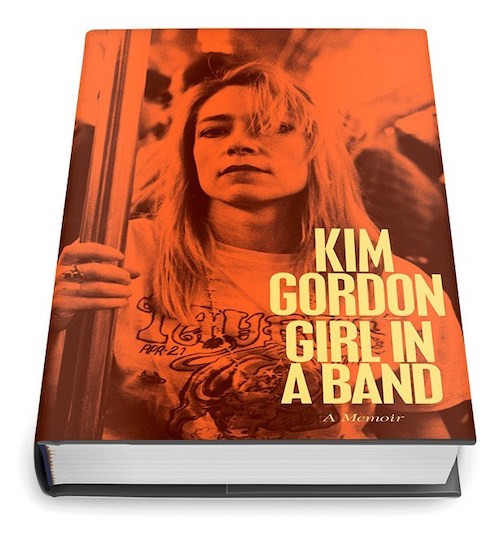An analysis of Jorge Otero-Pailos’ Répétiteur, an installation featured at the New York City Center’s Harkness Studio…

by: Nathaniel White
In allegory, truth “is bodied forth in the dance of represented ideas.” – Walter Benjamin
On view at the Harkness Studio, a dance rehearsal space tucked away on the fourth floor of the New York City Center, Jorge Otero-Pailos’ Répétiteur transforms the former atelier of dance-legend Merce Cunningham into an allegory of the dancing body, a corpse simultaneously extinguished and embalmed by the artist’s intervention into the space. An architectural historian and preservationist by trade, Otero-Pailos works primarily with latex-cast, a medium that he deploys at the City Center to cleanse the studio of the residues of the dancing body: dirt, sweat, and bits of skin that have accumulated on the studio walls over years of rehearsal. Evaporated into a liquid-latex solvent that subsequently congeals into hardened sheets of rubber, the traces of the bodies that have swept through the room have been placed in six, 4×4 light-boxes that are lit from below and scattered throughout the room. What results is a dazzling constellation of sculptural objects that punctuates the vast darkness of a space interrupted from its everyday function as a working dance studio. Washing the walls of the vestiges of the dancing body and wiping the floor of its rhythm and motion, the installation attests to an indissociable link between the processes of preservation and decay, death and salvation. Like Atget’s photographs of the dirtied facades and littered streetscapes of Old Paris — a city soon to be razed by the forces of modernization — Otero-Pailos’ latex-peelings are material indices of a disappeared past: a dancing body that only persists in its aesthetic reincarnation.
Communicated by word-of-mouth and text-message, the exhibition at the City Center has attracted only a small audience, giving many visitors the opportunity to wade through the dark studio space alone. Upon entrance, the visitor is welcomed by the répétiteur Patricia Lent, whose recorded voice emanates from the light-box nearest to the exhibition’s curtained ingress. As one of the the persons “entrusted with teaching, coaching, and rehearsing [Cunningham’s] work,” Lent is a student-cum-master who passes Cunningham’s corpus onto “the next generation, creating a chain of transmission.” The audio-recording of Lent giving choreographic instructions to her students thus situates the visitor within the temporality of familial inheritance: a linear and unidirectional relay of knowledge wherein each generation constitutes a discrete moment in the flow of time. Moving towards the back of the studio, the visitor finds this temporality materialized in the choreographic instructions of Cunningham, whose recorded “1,2,3,4,5,6” bellows from the light-box furthest from the studio entrance. An attentive ear notes that the entire sequence of audio-recordings, each emanating from a different light-box, is inaugurated by the count-off of the master-choreographer. Cunningham, then, becomes the progenitor of the sonic repetition that descends across the room.
The chain of choreographic transmission voiced on the acoustic plane reduplicates the temporality that the latex-casts solidify in plastic space. For in the same way that the generational relay — the transmission from Father to Son, Voice to Word — only allows for unidirectional movement within time, the medium of the latex-cast strips the debris that it preserves from their original architectural location, marking the impossibility of the return of the debris to their ‘natural’ site. Coagulated in latex and put on display, the traces of the dancing body have been irreparably distanced from their origin, frozen beneath the gaze of a spectator for whom their prior life on the studio walls—the history of their accumulation over time — is experientially inaccessible. As Otero-Pailos pens in his “Supplement to OMA’s Manifesto on Preservation,” a document advancing preservation as a paradigm-shifting force within the discipline of architecture, “the core lessons of preservation [are] that all things are constantly changing, and that once the damage is done, there’s really no return.” The artist’s preservative technique thus seems to negate the possibility of a retroactive temporality that would give the viewer access to the prehistory of the body-on-display, namely, the experience of its production through accumulation.
Nevertheless, is not the utopian promise of the latex-cast — a medium that transmits the residues of the dancing body mimetically rather than rationally, through the material absorption of its object rather than conceptual abstraction — precisely the conservation of an object that has been definitively sealed-off from human contact? Does not the mummification of the dancing body anticipate its resurrection in spectral form — the whispering nodes of light that illuminate the night of the studio and lucubrate the memory of the bodies that have revelés from its floor? Or, in the language of dialectics, is not the linear, unidirectional temporality that structures the constellation of sculpture and sound insofar as it repeats Cunningham’s corpus across the generations precisely that which mediates the development of a second, antithetical temporality, a force whose augmentation disinhibits the productive capacities that been reified in the latex-cast?
Instituted by virtue of the path that leads the visitor from the voice of the répétiteur at the entrance of the exhibition to that of Cunningham at the exhibition’s furthest reach — a trajectory that immanently negates the unidirectional time of the familial descent — this second temporality is both multiple and reversible, allowing for retroactive movement and, as will be immediately demonstrated, overlapping flows of temporal material. For beyond this initial traversal of the studio-floor, there is a traversal that one never really completes: an untotalizable network of paths that the irregular arrangement of objects invites the visitor to weave in and out of. In the time it takes the visitor to begin her divagation around the studio, to be led astray by the shimmering nodes of light, the audio-recordings start to superimpose on one another, creating a loosely-knit mesh of dancers’ feet hitting the floor and choreographers’ voices instructing them on their next move. It is thus that the visitor, liberated from the linear and universal temporality of the family, is opened onto the motion of the dancing body; the visitor’s own body, drifting in the darkness of the dance-studio, forming the channel through which dancer’s repetition and rehearsal makes itself heard.

Peering down into the brightness of the light-box, an opaque lucidity that blinds the spectator’s gaze rather than returning it, the visitor who lets herself become absorbed by the latex-cast rediscovers the motion of the body in the undulating lines of the room’s duplicated wall-trim and the suspiring residues of the dancer’s labor. The eye that immerses itself in the void of day, that dares to look the illuminated corpse head-on, finds that the coagulated vestiges of the dancer are not as dead as once thought, their preservation in rubber granting them a subterranean rhythm that is only given through the visitor’s prolonged attention. If this is yet another way in which Répétiteur summons the life of the dancing-body, the very life that its intervention into the space expunges, its function is to demonstrate that the condition of possibility for this summoning is the fact that, as residue or trace, the dancing body presents itself as absent prior to the artist’s intervention. Accumulated in the architecture of the studio, a kind of factory for dance production, the dancing-body is, in fact, submitted to a second death through Otero-Pailos’ latex-cleanse, the first being the alienation of the dancer’s body in the machinery of the dance institution, whereupon the body is reduced to a ‘trace’ of its former self. Like the false grandeur of the “monumental arches” that line the walls of the studio and lead to nowhere, the dancing body that Répétiteur returns for its audience has the quality of farce. Put differently, the source of life and authenticity to which the exhibition owes its existence comes to the work in the form of a fiction, a representation of a historical action that, as re-presentation, is already a step removed from the actual event of Cunningham’s rehearsal.
In positive terms, Répétiteur succeeds in transmitting the productive force of the Cunninghamian corpus only insofar as the dancer’s labor is converted a priori into a material representation of itself, the mark of a process carried out in and lost to time. And yet, the ‘second death’ that Otero-Pailos’ intervention inflicts on the development of the dancer’s productive capacities subjects the latter to a constitutive transformation. For while the residues that once inhabited the walls of the Harkness Studio retained a certain continuity with the dancer’s labor, their gradual accumulation on the studio walls forming a mirror-image of the self-development of the dancing body, the second-order alienation to which Otero-Pailos submits these residues effects a rupture between the body that inhabits the studio and its reflection in the architectural support. This rupture is evident not only in the cleansing of the walls and the clearing of the floor, but also and more strikingly in the effect that the staggered arrangement of light-boxes has on the image captured by the mirror that spans the length of the studio’s west wall. Whereas the dancer had obtained a perfect, real-time reflection of herself on the studio’s west wall, a visual and conceptual complement to the historical reflection provided by the accumulation of bodily residues on the other surfaces of the space, the visitor who divagates between Otero-Pailos’ sculptures finds her mirror-image continuously displaced from one light-box to the next. Each one of her reflections separated from the others by virtue of the blackness that pervades the space, the visitor to Répétiteur becomes trapped in an incessant alternation between states of concealment and unconcealment, failing to establish contiguity between her various selves.
A mode of perception that negates the progressive development of the dancer’s productive capacities through technical repetition — the evolution to which the mirror would otherwise pay witness — the visitor’s experience of rupture and discontinuity transforms the mirror from a mechanism of self-transparency into one of self-opacity. No longer that through which the subject reflects her labor in order to refine and progress her technique, the mirror in Répétiteur shatters the self-identical, self-creating subject and fragments the visitor into a discontinuous multiplicity. Still, the dream that the visitor’s many faces may one day concentrate into a subjective unity shines forth from each one of these reflected fragments. For in the time a flash, the visitor who passes through the brightness of the latex-cast body catches a glimpse of herself as dancer — a reflection of the subject that once was.





